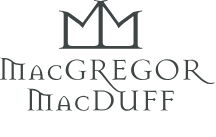Scotland's iconic relationship with the kilt began as far back as the 16th century when wool became an affordable and effective material for clothing. Before sheep and wool were established in the highlands, people would wear clothes made from linen and while cheap, it was better suited for climates much further south than the highlands of Scotland. Wool on the other hand is naturally weather-resistant and a great insulator, perfect for the harsh Scottish conditions.

Why did Scots start wearing kilt?
Firstly, it’s important to note that back in the late 16th century, there weren’t people roaming the streets of Edinburgh and Glasgow wearing great kilts. People in modern Scottish towns and cities would have worn short-waisted doublets and breeches, much like the rest of the UK at the time. The great kilt was a product of practicality in the highlands of Scotland where the ground was often boggy and the winters were unforgiving. The great kilt, belted plaid or feileadh-mór was a large piece of material that was wrapped around the body in a specific way that created pleats at the back. It was secured with a belt and the excess was draped over the shoulder. The great kilt was worn at knee length so it would stay out of the mud below and could be unfolded to be used as a blanket if needed. Thanks to it being made from wool, when the kilt got wet in winter, the exterior fabric would freeze and the inside would stay dry. This would actually increase the insulation of the kilt and help keep the highlander warm in less desirable conditions. There are even some historical texts that suggest that kilts were intentionally wetted during winter to help keep the wearer warmer.

When was the little kilt invented?
During the early part of the 18th century, a new form of the kilt started to make an appearance in Scotland. Named the felie-beg or little kilt, it looked a lot like the kilts we know today with sewed-in pleats and only featuring the lower portion of the great kilt. The little kilt grew in popularity quite quickly but in 1746 this growth came to an abrupt stop when the Dress Act was introduced. After the Battle of Culloden, the wearing of highland dress in Scotland was made illegal by the British Government and this included kilts as well as tartan. It wasn’t until the Act was repealed in 1782 that kilts and their popularity resurged. Since then, kilts have become part of Scottish national identity and are celebrated across the world as a symbol of Scotland.

What do the different elements of a kilt outfit represent?
Other than the kilt itself, a modern kilt outfit consists of many elements that have historic roots. Due to the lack of pockets on a kilt, a sporran is worn today to keep your phone and wallet safe. However, traditionally highlanders would wear a sporran too. They may have been less decorative than the ones we wear today but they were just as essential for keeping daily items safe and on their person as they went about their lives. These items may have included food, weapons, or coins. Ghillie brogues also go way back to the days of the great kilt. Highlanders opted to wear shoes with holes and long laces due to the wet terrain. The holes allowed water to escape easily and the laces were tied higher to keep them out of the mud, meaning the wearer could adjust their laces without getting dirty hands. The Sgian Dubh or black dagger was a multipurpose knife that a highlander would use for various tasks but today they are just a decorative accessory. Although, you can get some sgian dubhs with bottle openers on the blade making them slightly more functional and excellent as groomsmen's gifts. Flashes were worn to help keep highlanders socks up and this is still the reason they are worn today. A plaid is worn today by someone of importance. This could be a groom at his wedding or the host of a Burns Supper. The plaid actually represents the top half of the great kilt that has been lost to time.

While the kilt may be moving towards becoming a fashionable article of clothing, it is still steeped in tradition and history. We have a range of both traditional and contemporary kilt outfits to buy as well as hire at MacGregor and MacDuff. Check out our online collection and find your next highlandwear style.
